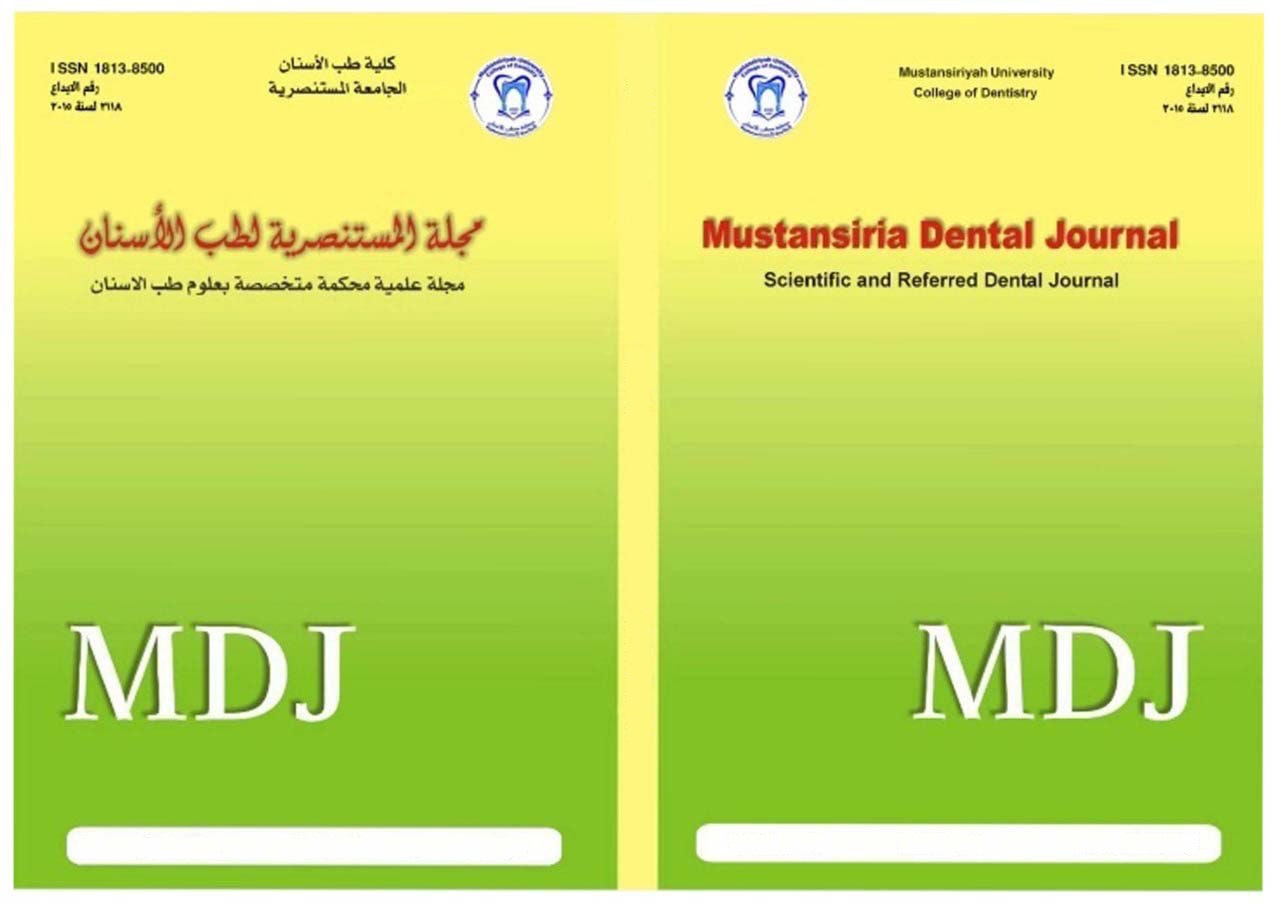Abstract
Abstract
widespread use of rotary Nickel-Titanium systems has caused manufacturers to
produce gutta-percha cones that match the taper of the canals prepared with these
systems. The aim of this study was to use electrochemical method to compare the
apical sealing ability of taper single-cone, Thermafil obturation in canals prepared
with ProTaper and ProFile instruments. Forty extracted human mandibular premolar
were divided into 2 groups. All canals in group (A) prepared with ProFile, while all canals in group (B) prepared with ProTaper. Each group subdivided into two subgroup according to the method of obturation, (Thermafil and matched taper- single cone).The apical leakage in these groups was evaluated using an electrochemical method. T-test showed a non significant difference between Thermafil and matched taper-single cone obturation technique in the same group. A significant difference was found between ProTaper and ProFile group in both obturation techniques.
widespread use of rotary Nickel-Titanium systems has caused manufacturers to
produce gutta-percha cones that match the taper of the canals prepared with these
systems. The aim of this study was to use electrochemical method to compare the
apical sealing ability of taper single-cone, Thermafil obturation in canals prepared
with ProTaper and ProFile instruments. Forty extracted human mandibular premolar
were divided into 2 groups. All canals in group (A) prepared with ProFile, while all canals in group (B) prepared with ProTaper. Each group subdivided into two subgroup according to the method of obturation, (Thermafil and matched taper- single cone).The apical leakage in these groups was evaluated using an electrochemical method. T-test showed a non significant difference between Thermafil and matched taper-single cone obturation technique in the same group. A significant difference was found between ProTaper and ProFile group in both obturation techniques.
Keywords
Matched taper-Single cone
ProTaper
thermafil
